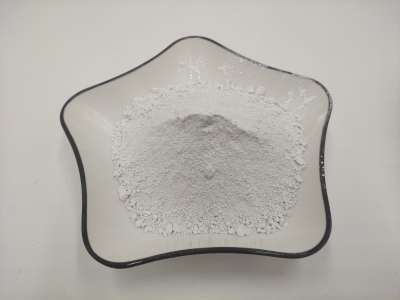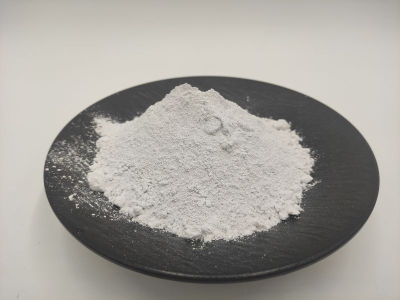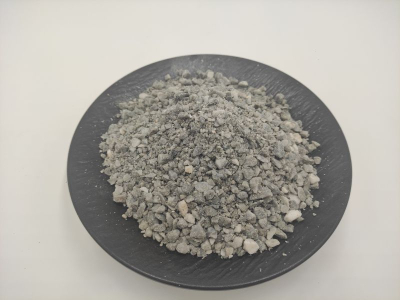Learn more about the diverse features and applications of Barite Ore
The following is a Zhihu article on "Barite Ore": ** "In-depth understanding of the diverse characteristics and applications of Barite Ore" ** In the field of minerals, Barite Ore (barite ore) plays a very important role.
Today, let's explore the mysteries of Barite Ore in depth. The first thing to mention is Drilling Barite Ore (drilling barite ore ore). It has an irreplaceable position in the oil and gas extraction industry.
Drilling Barite Ore can increase the specific gravity of drilling mud, effectively control downhole pressure, and ensure the safety and smooth drilling operations.
Moreover, due to its special physical and chemical properties, Drilling Barite Ore performs well in improving drilling efficiency. Next up is Chemical Barite Ore (chemical barite ore).
Chemical Barite Ore is widely used in the chemical industry and is an important raw material for the production of many chemical products. Its stable chemical properties make it a high-quality chemical additive.
Take a look at Paint Grade Barite Ore (paint grade barite ore). Paint Grade Barite Ore can significantly improve the hiding power, durability and gloss of coatings. In the coatings industry, Paint Grade Barite Ore can be said to be one of the key factors in improving product quality.
Supper White Barite Ore (Super White Barite Ore) stands out for its excellent whiteness. Supper White Barite Ore is often used in products that require extremely high color purity, giving them a pure and bright appearance. Finally, Carbonate Free Barite Ore (carbonate-free barite ore).
Carbonate Free Barite Ore has higher purity and stability, and plays an important role in some application scenarios where the impurity content is strict.
Barite ore, primarily composed of barium sulfate (BaSO₄), is a critical industrial mineral renowned for its high density, chemical stability, and whiteness. These properties underpin its extensive use across sectors such as oil and gas drilling, construction, medical imaging, and manufacturing. This article presents a comprehensive, technical, and SEO-optimized exploration of barite ore’s physical and chemical features, engineering principles, industrial applications, and regulatory requirements.
Barite Ore: Key Features and Characteristics
1. Chemical Composition
Predominantly barium sulfate (BaSO₄), typically >85% purity in commercial ores
Impurities may include silica, iron oxides, and minor carbonates
2. Physical Properties
| Property | Typical Range |
|---|---|
| Color | White, gray, yellowish, brown |
| Specific Gravity | 4.2 – 4.5 |
| Hardness (Mohs) | 3 – 3.5 |
| Crystal System | Orthorhombic |
| Solubility | Insoluble in water, slightly soluble in acids |
Occurs as tabular, prismatic, or bladed crystals, often massive or granular
Particle size ranges from coarse lumps to fine powders after processing
Industrial Applications of Barite Ore
1. Oil and Gas Drilling
Used as a weighting agent in drilling muds to counterbalance downhole pressures
Requires high specific gravity (>4.2) and low impurity content for API compliance (API Spec 13A)
Helps prevent blowouts and stabilizes wellbore
2. Paints and Coatings
Acts as a white pigment extender, improving brightness and durability
Enhances opacity and corrosion resistance in coatings
Particle size typically micronized to 1–10 μm for optimal dispersibility
3. Medical Field
Used as a contrast agent in X-ray imaging due to barium’s high atomic number
Must meet pharmaceutical grade purity and regulatory standards (USP)
4. Rubber and Plastics
Functions as a filler to improve mechanical properties and reduce production costs
Enhances density and wear resistance
5. Glass and Ceramics
Used to improve brightness and chemical resistance of glass products
Provides thermal stability in ceramic glazes
Engineering Principles Related to Barite Ore Processing and Application
Particle Size Control
Tailoring particle size is critical for specific applications:
Coarse particles (100+ μm) in drilling mud
Fine, micronized powders (<10 μm) in paints and plastics
Density Optimization
Barite’s high density (~4.5 g/cm³) is leveraged to control fluid dynamics in drilling and improve product weight in industrial applications.
Chemical Stability
Its chemical inertness prevents unwanted reactions in formulations, maintaining product integrity over time.
Regulatory and Quality Standards
| Standard / Regulation | Application |
|---|---|
| API Specification 13A | Barite for drilling fluid quality |
| USP Monographs | Pharmaceutical-grade barite |
| REACH Regulation (EC 1907/2006) | Chemical safety in the EU |
| RoHS Directive 2011/65/EU | Limits on hazardous substances (Pb, Cd) |
| ISO 9001 | Quality management certification |
Handling and Safety Considerations
Use dust suppression systems and personal protective equipment (PPE) during mining and processing.
Barite dust inhalation should be minimized to prevent respiratory irritation.
Comply with OSHA and local occupational safety standards.
Common Questions (FAQs)
Q1: What is the difference between natural barite ore and precipitated barium sulfate?
A: Natural barite is mined directly from deposits and may contain impurities, whereas precipitated barium sulfate is synthetically produced, offering higher purity and controlled particle size.
Q2: How is barite ore processed for industrial use?
A: Typically, barite ore is crushed, ground, and classified by particle size; sometimes it is washed or chemically treated to remove impurities.
Q3: What industries demand the highest purity barite?
A: Pharmaceutical and medical imaging industries require the highest purity, followed by coatings and plastics industries.
Q4: Are there environmental concerns with barite mining?
A: Mining must follow regulations to mitigate dust, water contamination, and land disruption. Responsible mining practices are essential.
Q5: Can barite ore be recycled or reused?
A: In some applications like drilling, spent barite mud can be recycled if reprocessed to remove contaminants.



